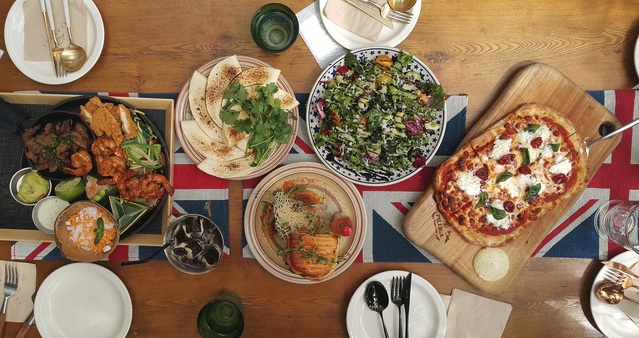When people have the opportunity to travel, their horizons are broadened. They get to see how people in other places live, and they discover that we’re really more alike than different.
Many travelers are fascinated by the differences in foods they’ll find in foreign countries. You’ll hear people wax poetic about the gelato they had in Italy, the deliciousness of the Jollof rice dishes they tried in West Africa, or how amazing the ramen was in Japan.
Many people in the US will try to find places that can recreate these culinary memories once they’re back home. Sometimes they’re successful and find a British tea shop with banoffee pie or a wine shop with the same gluhwein they had at a Christmas market in Munich. Other times, it’s impossible because just as there are lots of American foods that are banned in other countries, there are some foods from other countries that are banned here in the U.S. Here are a few of them:
Beluga Caviar
Beluga caviar is the most expensive type, derived from the eggs of the wild beluga sturgeon.
The U.S. Fish and Wildlife Services banned the importation of beluga caviar (along with other beluga products) in 2005. The wild beluga sturgeon is an endangered species, and the ban is in place to help stop the fish from extinction.
Époisses (a.k.a. Époisses de Bourgogne) is a soft-paste cheese made from cow’s milk. It has such a strong scent that it’s been banned on public transportation in France. But if you can get past the smell, the flavor balances salty and sweet, with a rich, creamy taste that lingers on your palate. From CheeseOrigin.com:
Upon the first bite, you’ll notice an initial salty tang, which is quickly followed by a profound creaminess. This decadent creaminess is one of Epoisses’ defining features, thanks to the high-fat content of the cow’s milk from which it’s crafted. As the cheese melts in your mouth, it releases subtle notes of sweet caramel and earthy umami, adding layers of complexity to its flavor.
The rind, washed in Marc de Bourgogne, contributes a slight alcoholic note to the cheese’s overall flavor. This hint of brandy combined with the cheese’s inherent flavors creates a unique, savory taste that lingers on the palate.
Époisses is not allowed to be imported into the U.S. because it’s made from raw milk. Our federal law prohibits the import of unpasteurized raw milk cheese that is less than 60 days old, a category that Époisses falls into. Regulators are concerned the cheese could harbor harmful bacteria or pathogens, particularly listeria.
Haggis
Best known as a Scottish food, Haggis is a savory pudding that consists of a mixture of sheep’s heart, lung, and liver, mixed with other ingredients such as oatmeal, chopped onion, suet, and stock. It’s typically cooked and served in a sheep’s stomach.
The USDA banned the sale of sheep lungs in 1971 due to the emergence of the degenerative disease scrapie, which affects sheep’s central nervous system. Haggis can still be produced and sold in the U.S. but can’t be imported from the UK due to the ban.
Kinder Surprise Eggs
Sold in the UK, Ireland and other European countries since the mid-1970s, Ferrero candy company’s Kinder Eggs are hollow egg-shaped chocolate candy with a toy surprise inside.
As per Ferrero, Kinder Eggs are “…not available in the United States as the [FDA] has taken the position that a specific regulation relating to non-nutritive objects embedded in foodstuff makes Kinder Surprise not suitable for sale and distribution in the US.” In other words, the FDA is concerned that children will try to eat the toy surprise.
That being said, in 2018, Ferrero introduced Kinder Joy eggs in the U.S. They’re similar to the Euro-style Kinder eggs, but instead of a toy inside the egg, it’s an egg shape where half of it is edible and the other half is the toy. I guess if the toy is only next to the candy but not inside it, kids won’t try to eat it? I don’t know.
Tonka Beans
Tonka beans are the seeds from the (it has several names) cumaru/kumaru/Brazilian teak tree and are black and wrinkled, with a smooth, brown interior. Mainly grown in Venezuela, Brazil and Colombia, They’re used in tiny amounts in European cuisines (mainly French desserts and stews), with a flavor that’s been described as a mix of vanilla, almond, clove, cinnamon, and amaretto.
They’re illegal for human consumption in the U.S. because they produce a chemical called coumarin, which is a blood thinner. It can cause extreme liver toxicity when consumed in high amounts, so ever since the 1950s, the FDA banned any ingredient containing the chemical from consumption in the U.S.
Want to comment on this post? Great! Read this first to help ensure it gets approved.
Want to sponsor a post, write something for Your Mileage May Vary, or put ads on our site? Click here for more info.
Like this post? Please share it! We have plenty more just like it and would love it if you decided to hang around and sign up to get emailed notifications of when we post.
Whether you’ve read our articles before or this is the first time you’re stopping by, we’re really glad you’re here and hope you come back to visit again!
This post first appeared on Your Mileage May Vary
Join our mailing list to receive the latest news and updates from our team.

